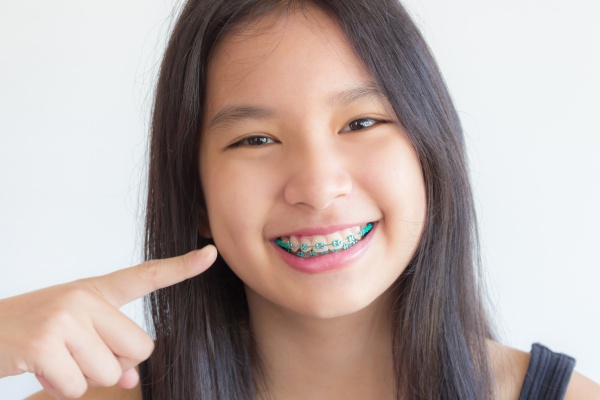Alternatives to Straightening Teeth With Traditional Braces

The last thing a patient wants to hear from the dentist is that braces are necessary to straighten crooked teeth. Most people think of metal squares that temporarily ruin the look of the teeth. Dental technology has progressed to the point that conventional braces are no longer necessary. Below, we explain a few alternatives to metal braces for straightening crooked teeth.
Alternatives to metal braces
Lingual braces
Lingual braces, also known as concealed braces, are similar to metal braces but they are not as visually distracting. Lingual braces’ brackets are connected behind the teeth. Patients with lingual braces can open wide to smile, talk or laugh, and no one will know they are wearing braces. Lingual braces cannot be seen by anyone, as they are concealed on the reverse side of the teeth. It takes a specialized dental mirror and the perfect vantage point to see lingual braces in the mouth.
Invisalign
Invisalign is revered by dentists, orthodontists and patients across the globe. These translucent plastic trays fit directly over the teeth. Invisalign trays are molded in a completely customized manner, allowing patients to progress from one tray to the next for timely teeth straightening. Invisalign cannot be seen by the naked eye unless the observer is within a few inches of the patient. This alternative to braces for straightening teeth is also widely favored because it is fully removable. Patients can remove Invisalign to floss, brush and eat. Invisalign’s removability also empowers patients to eat a wide range of foods without restriction.
Between 18 and 30 plastic aligners are customized to fit on the teeth and gradually straighten crooked teeth. Invisalign aligners must be removed every couple of weeks across treatment duration. The length of treatment depends on the severity of the crooked teeth.
Retainers
Although retainers cannot address all issues pertaining to crooked teeth, these custom-fit and fully removable dental devices close spaces between teeth. They can even shift a single tooth. Unlike traditional braces, retainers are concealed in the mouth. These metal or plastic devices are unobtrusive, comfortable and affordable.
Ceramic braces
Ceramic braces are similar to regular braces in most facets except aesthetics. Ceramic braces are the same shape and size as regular metal braces, yet the ceramic variety features clear or enamel-colored brackets. These brackets blend in quite nicely with the teeth. Some ceramic braces even feature tooth-colored wires to minimize visibility.
Cosmetic dentistry
Cosmetic dentistry has emerged as a viable alternative to traditional braces. Dental bonding and/or porcelain veneers are thin but incredibly hard shells comprised of porcelain. Veneers are permanently attached to the front portion of crooked, chipped, discolored, misaligned or improperly spaced teeth. Patients who opt for veneers find these shells durable and strong.
Dental bonding solves most spacing and shaping issues addressed by regular braces. Bonding is the application of resin material to conceal flaws and fill gaps between teeth. The bonding hardens, providing improved durability and stability.
Contact us to find out more about alternatives to braces
Patients looking for an alternative to braces should give us a call as soon as possible. Our dental team is here to help patients straighten teeth with options aside from traditional braces. Contact us today to schedule an appointment.
Request an appointment in our Visalia dentist office here: https://www.dentistofvisalia.com.
Related Posts
When you visit your dentist, preventative dental care should be at the forefront of your mind. Nobody enjoys getting extra work done because of the cost and time and because it can result in some uncomfortable procedures. Cavities, gingivitis, and other diseases are preventable with the correct oral hygiene. X-rays and cleanings done at your…
Dental laminate treatments offer a minimally invasive solution for patients looking to enhance their smiles. Both dental laminates and veneers improve the appearance of teeth by covering imperfections such as discoloration, chips, and minor misalignments. While these treatments serve a similar purpose, their differences impact durability, preparation, and overall aesthetic outcomes. Understanding these distinctions can…
Preventative dental care is one of the most important ways to take care of your teeth and gums.Having a healthy smile can give you more than a great first impression. Taking care of your teeth is important in maintaining your overall body health as well. If you don’t take proper care of your teeth, you…
Fluoride treatments are very important in preventative dental care. Every patient wants their dentist to provide them with all the necessary tools to keep their smile bright and white. You go to the dentist twice a year as recommended and brush and floss your teeth regularly.Doing your part in your oral care routine only goes…
